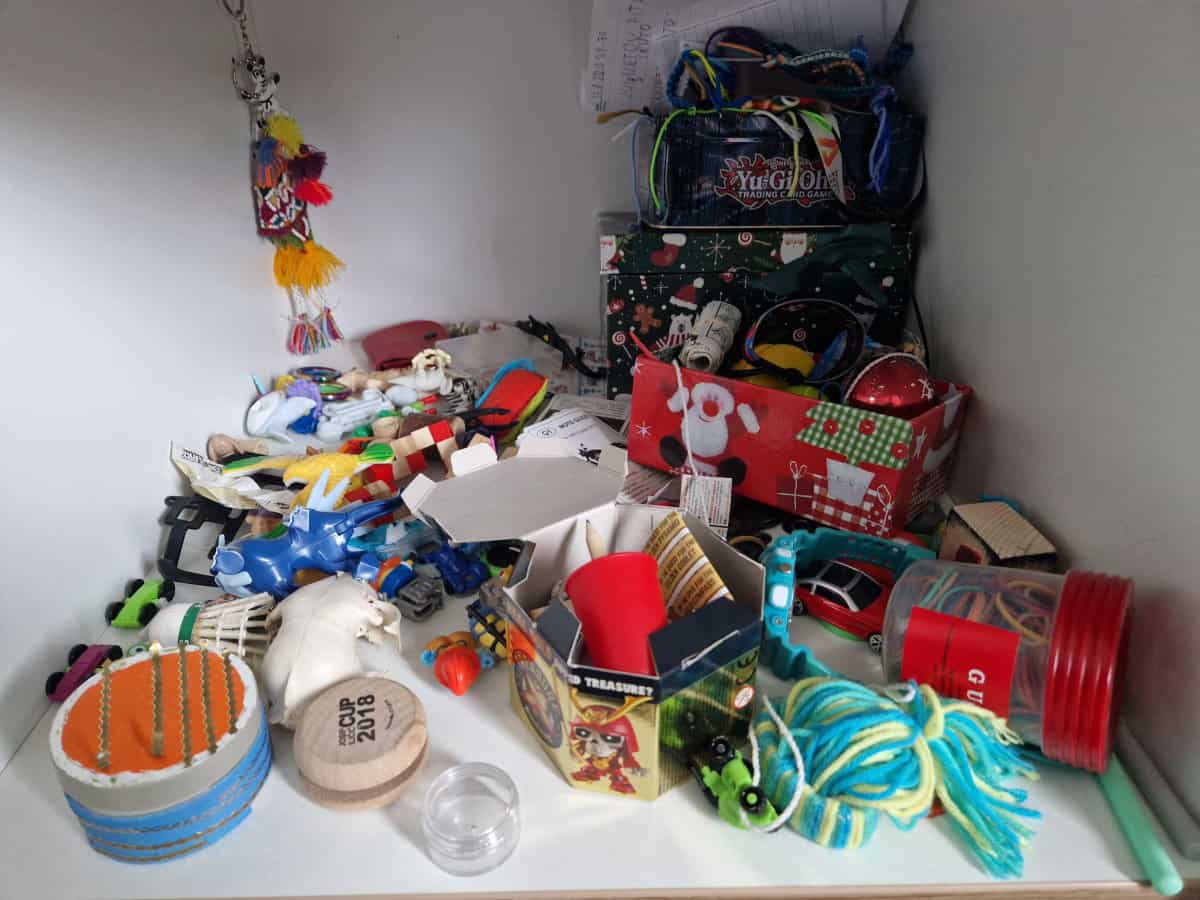One of the challenges many parents face is managing the never-ending accumulation of toys. It can feel like as soon as you get rid of one toy, three more take its place. And if you have kids of different ages, it can be even more difficult to keep up with the demand.
So how do you keep the toy situation under control?
First, it’s important to be realistic about how many toys your child needs. A good rule of thumb is one toy for every month of age, so a three-year-old would need 36 toys. Of course, this number will fluctuate depending on the types of toys you have and how often they are played with.
Try to rotate toys on a regular basis so your child doesn’t get bored and is less likely to ask for new ones. Every few months, put away some of the toys that haven’t been used in a while and replace them with others. This will also help keep your child’s play area more organized.
Finally, don’t be afraid to say no to new toys. It can be tempting to give in every time your child asks for something, but this will only add to the toy clutter. If you do cave and buy a new toy, make sure it’s something that can be used in multiple ways or that has lasting appeal.
By following these tips, you can help keep the toy situation under control and avoid having your home taken over by toys. However, if the problem already persists, sometimes you need ground zero to begin again and it is time to declutter.
There are several reasons why it is important to declutter toys.
- One reason is that it can help to reduce the amount of clutter in your home.
A cluttered home can be difficult to keep clean and organized, and it can also be a safety hazard. Decluttering toys can also help to free up space so that your child has more room to play.
- Additionally, it can be therapeutic for both you and your child to declutter toys together.
This can help you bond with your child while also teaching them the importance of decluttering and organizing their belongings.
- Finally, decluttering toys can help to prepare your child for future transitions, such as starting school or moving to a new home.
It can also be helpful for children who have difficulty letting go of things. If your child has a lot of toys, decluttering can help them to focus on the toys that they love and use, and it can also help to teach them about the importance of giving away or donating items that they no longer need or want.
If your child’s bedroom is overflowing with toys, it may be time to declutter. Here are some tips on how to declutter toys:
1. Get rid of anything that is broken or missing parts or pieces.
2. Donate any gently used toys that your child no longer plays with.
3. Put away any seasonal or holiday-themed toys.
4. Consolidate smaller toys into bins or baskets.
5. Store larger toys in a toy box or closet.
By following these tips, you can help to declutter your child’s bedroom and make it more organized and inviting.
Tips on purging toys
There are some tips and guidelines when going through the decision process of what toys to keep and what to get rid of and how.

1. One way to decide which toys to keep and which to purge is to think about whether or not your child has played with the toy in the past six months. If not, it may be time to let it go.
2. Another tip is to consider whether the toy is age-appropriate for your child. If they have outgrown it, it may be time to say goodbye.
3. If you’re struggling to let go of certain toys, try asking yourself why you’re holding on to them. It may be sentimental value, or because you think your child will want to play with them again someday. Whatever the reason, be honest with yourself and decide if it’s truly worth keeping.
4. Once you’ve decided which toys to purge, it’s important to do so safely and responsibly. If the toys are in good condition, consider donating them to a local charity or second-hand store. If they’re not in good condition, make sure to dispose of them properly so they don’t end up in a landfill.
By following these tips, you can help declutter your home and make more space for your child to play. What’s more, you may even end up making someone else’s day by donating your gently used toys to those in need.
Keeping the playroom clean
It is important to keep a child’s playroom clean because it can help prevent accidents and injuries. A cluttered playroom can be a hazard, and it can be difficult for children to find toys or games that they want to play with. A tidy playroom can also make it easier for parents to monitor their children’s activities and make sure that they are safe.

Some ways to keep a child’s playroom clean are to have them put their toys away when they are done playing with them, having a place for everything, teaching them to put things back in their place, and having regular clean up times where everyone works together to tidy up the room.
You can also make it fun by turning it into a game or a competition. Whoever picks up the most toys in a certain amount of time wins!
How to declutter a playroom
There are plenty of ways to declutter a child’s playroom – here are just a few:
1. Create ‘zones’ within the playroom – this could be a specific area for puzzles, another for dolls and so on. This will help to keep everything tidy and in its place.
2. Encourage your child to put away their toys after playing with them. This will become a habit and will help to keep the playroom tidy.
3. Use storage baskets, boxes or shelves to store toys. This will help to keep everything off the floor and in one place.
4. Regularly declutter the playroom – this could be every few months or so. Go through all the toys and get rid of anything that is no longer played with. This will help to keep the space tidy and prevent toys from taking over the playroom!
Toy minimalism, what to keep
Toy minimalism is the practice of reducing the number of toys that a child has access to. This can be done for a variety of reasons, including simplifying the home environment, encouraging creativity and imagination, and reducing clutter.
While there is no one-size-fits-all approach to toy minimalism, the general goal is to have fewer toys that are high quality and offer a variety of play experiences. This might mean having just a few basic blocks or building toys, rather than a large collection of different types of toys.
There are many benefits to reducing the number of toys a child has access to.
- For one, it can help to reduce clutter in the home.
- It can also encourage kids to be more creative and use their imagination, since they will have to find new ways to play with fewer toys.
- Additionally, toy minimalism can save money in the long run, since you won’t need to keep buying new toys to keep your child entertained.
There are a few key ways to practice toy minimalism with your child without sacrificing happiness.
- First, consider the types of toys your child enjoys the most and focus on those. There is no need to have every single type of toy available; a few well-chosen options will suffice.
- Second, look for toys that can be used in multiple ways. These are often the most versatile and interesting options, as they can be played with in different ways each time.
- Finally, don’t be afraid to declutter your child’s toy collection regularly. This will help keep things fresh and ensure that only the most-loved toys are kept.
How to declutter stuffed animals
If your child has too many stuffed animals, it can be tough to keep them all organized and tidy. Here are a few tips for decluttering:
1. Start by sorting the stuffed animals into categories. This could include big animals, small animals, baby animals, etc.
2. Once you have sorted the animals into categories, start paring down the number in each category. Keep only the animals that your child loves the most.
3. Once you have decluttered, find a place to store the animals so they are out of the way but still accessible. This could be in a toy box, on a shelf, or in a closet.
4. If your child is attached to a lot of animals, consider investing in a stuffed animal holder. This can be hung on the wall or door and is a great way to keep animals organized and tidy.

